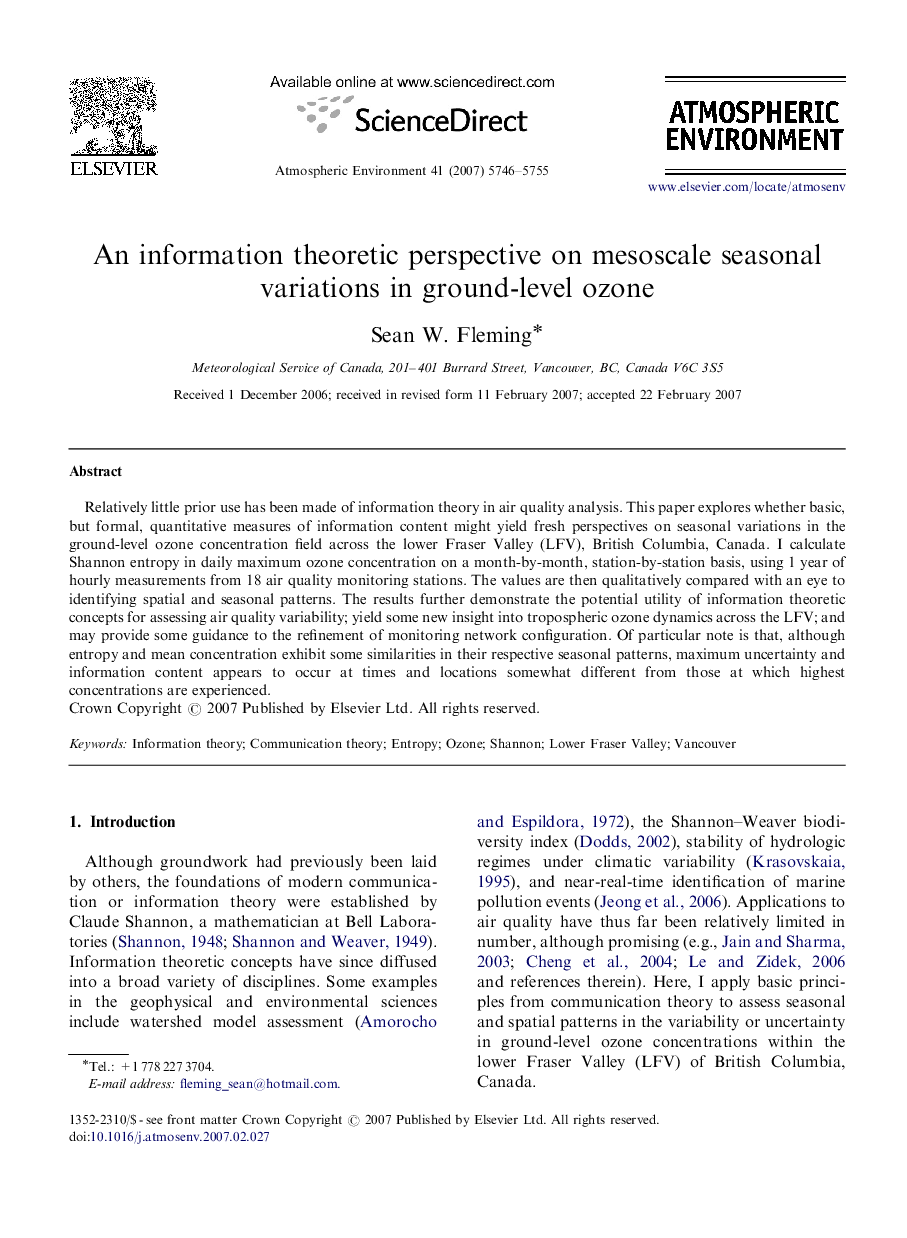| Article ID | Journal | Published Year | Pages | File Type |
|---|---|---|---|---|
| 4443427 | Atmospheric Environment | 2007 | 10 Pages |
Relatively little prior use has been made of information theory in air quality analysis. This paper explores whether basic, but formal, quantitative measures of information content might yield fresh perspectives on seasonal variations in the ground-level ozone concentration field across the lower Fraser Valley (LFV), British Columbia, Canada. I calculate Shannon entropy in daily maximum ozone concentration on a month-by-month, station-by-station basis, using 1 year of hourly measurements from 18 air quality monitoring stations. The values are then qualitatively compared with an eye to identifying spatial and seasonal patterns. The results further demonstrate the potential utility of information theoretic concepts for assessing air quality variability; yield some new insight into tropospheric ozone dynamics across the LFV; and may provide some guidance to the refinement of monitoring network configuration. Of particular note is that, although entropy and mean concentration exhibit some similarities in their respective seasonal patterns, maximum uncertainty and information content appears to occur at times and locations somewhat different from those at which highest concentrations are experienced.
